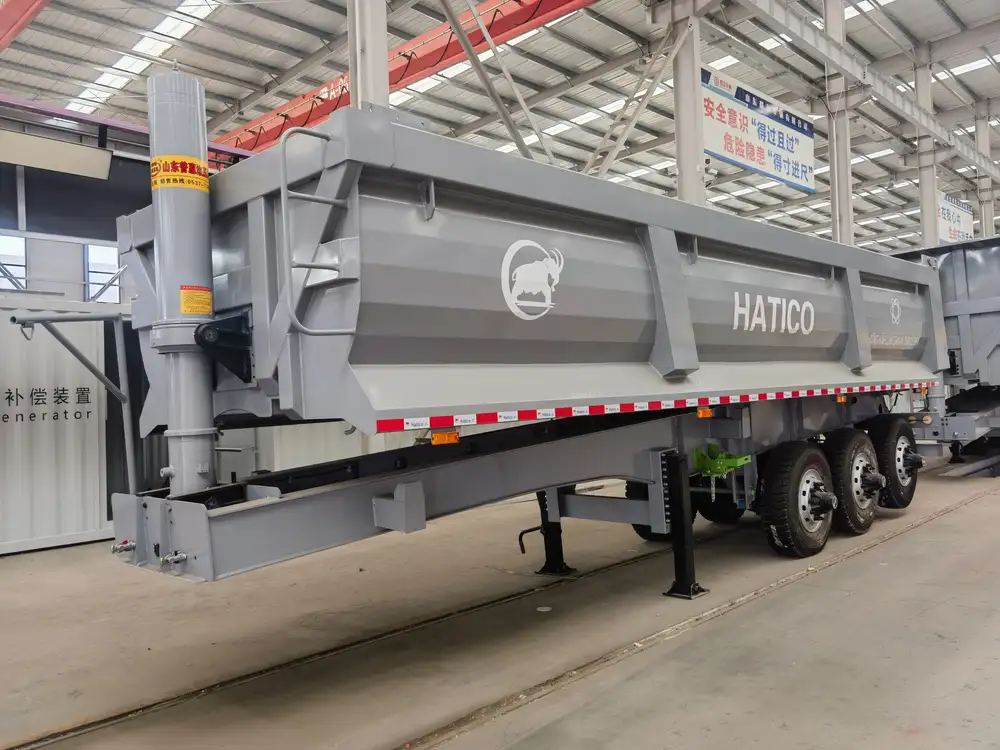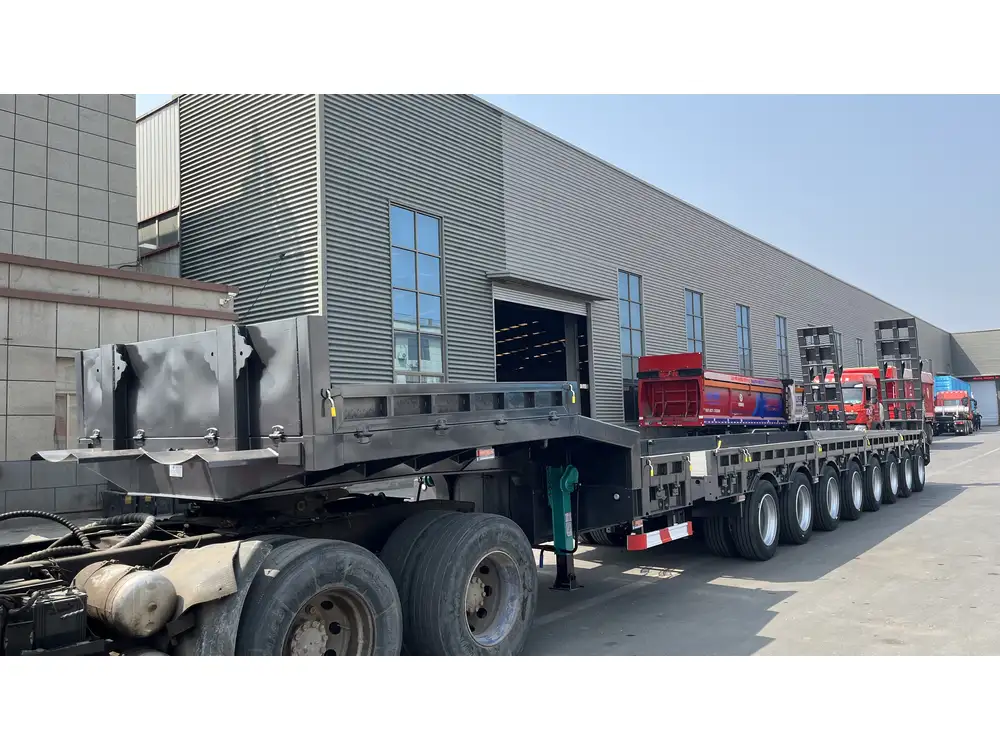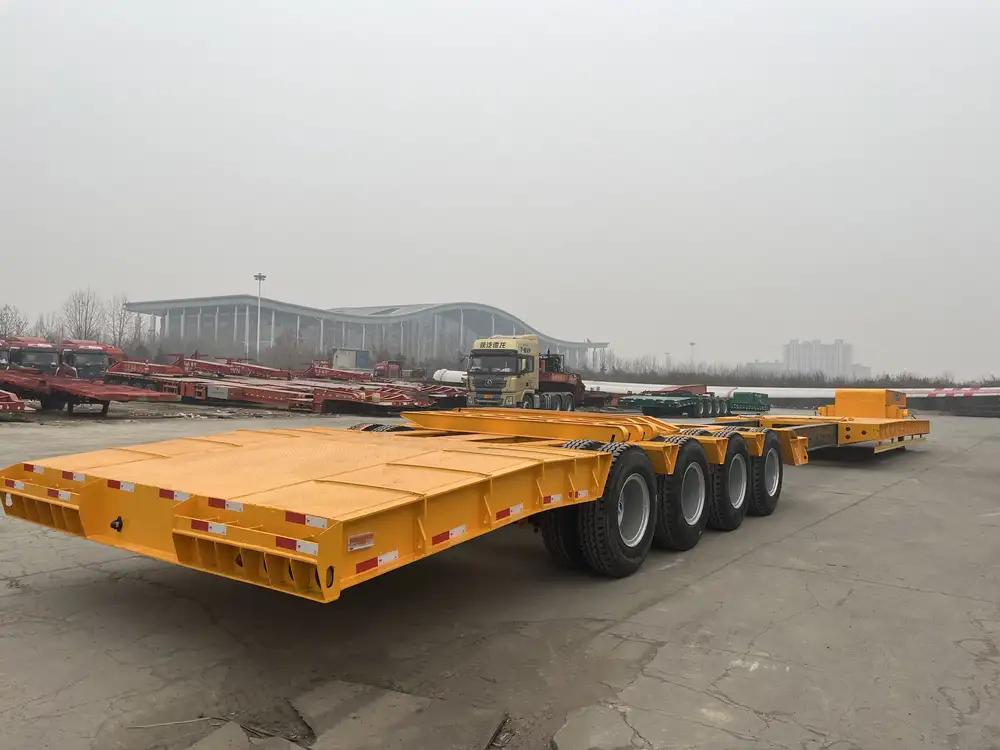The semi-trailer and truck manufacturing industry is vast, with numerous specifications that can either enhance or inhibit the effectiveness of our trailers. For those in the construction, landscaping, agricultural, or similar industries, understanding how many amps a dump trailer draws can be pivotal. It not only influences the choice of towing vehicle but also ensures efficient loading and unloading processes. In this article, we’ll break down the critical elements of electrical needs for dump trailers, looking at factors that determine power consumption, and how to select the right equipment to optimize performance.
Table of Contents
- The Basics of Dump Trailers
- Power Requirements: An Overview
- Calculating Amperage
- Factors Affecting Amp Draw
- Voltage vs. Amperage: Understanding the Difference
- How to Properly Align Your Dump Trailer with Your Vehicle
- Troubleshooting Electrical Issues
- Conclusion
The Basics of Dump Trailers
Dump trailers have become synonymous with efficiency in transporting and unloading materials. These versatile trailers are equipped with hydraulic lift systems that enable them to dump their contents with ease. The hydraulic system typically operates using electrical components that necessitate a firm understanding of how many amps the trailer draws to ensure both vehicle compatibility and operational efficiency.

Components of a Dump Trailer
- Hydraulic Pump: The heart of the dumping mechanism, responsible for lifting and lowering the trailer bed.
- Batteries: Provide the necessary power to the hydraulic system and control circuits.
- Wiring Harness: Connects all electrical components, ensuring seamless communication and power distribution.
- Towing Connection: Typically includes a 7-pin connector to link with the towing vehicle’s electrical system.
Understanding these components gives insight into the electric consumption and potential amp draw from the dump trailer.
Power Requirements: An Overview
Before getting into precise numbers, it is crucial to understand the average power consumption across various dump trailers. Most electric dump trailers require between 10 to 20 amps depending on the size of the system and the workload.
General Amperage Range
| Trailer Size | Typical Amp Draw | Usage Type |
|---|---|---|
| Small | 10-12 amps | Residential landscaping |
| Medium | 12-15 amps | Light construction work |
| Large | 15-20 amps | Heavy-duty construction |
Understanding this general range helps in planning your vehicle’s electrical capabilities.

Calculating Amperage
One of the essential aspects of ensuring a dump trailer operates efficiently is knowing how to calculate the amperage it will draw. Here’s a simple formula:
Power (Watts) = Voltage (Volts) × Current (Amperes)
To determine the amperage, you can rearrange the formula:
Current (Amperes) = Power (Watts) / Voltage (Volts)
Typically, dump trailers operate on a 12-volt system. Let’s assume a hydraulic pump requires 1000 watts.
Calculation Example:
- Voltage: 12 V
- Power: 1000 W
Using the formula:
[ \text{Current (Amps)} = \frac{1000 \text{ W}}{12 \text{ V}} = 83.33 \text{ A} ]However, continuous operations and peak draw may vary due to factors like motor efficiency, so always consider the efficiency rating of the components.
Factors Affecting Amp Draw
A variety of factors can impact how many amps a dump trailer draws during operation:

1. Pump Specifications
- Different pumps may be rated for varying power outputs, which can significantly affect amperage.
2. Operating Conditions
- Conditions such as the load on the trailer, the incline of the ground, and temperature can affect how much work the hydraulic system needs to do.
3. Wiring Size
- The gauge of the wiring used can lead to changes in efficiency. Smaller gauge wiring can lead to higher resistance and increased amperage draw.

4. Battery Health
- Battery condition can determine the maximum output of the trailer. A poorly charged or aging battery may limit effective amperage.
5. Motor Type
- The type of motor installed in the hydraulic pump (AC vs. DC, for instance) can cause variations in power and amperage requirements.
Understanding these factors can help manufacturers and operators strategize effectively about equipment use and expectations.
Voltage vs. Amperage: Understanding the Difference
Voltage and amperage are integral to understanding electrical systems but serve different purposes.
- Voltage (V): Represents the potential difference that drives electrical current through a circuit.
- Amperage (A): Represents the flow of electric charge, indicating how many electrons pass a point in the circuit over a specific time.

Practical Implications
Both values impact trailer performance. High voltage with low amperage can be effective for long wiring runs with less heat loss. However, a high amp draw at a lower voltage may indicate an inherent inefficiency that could lead to overheating or damage.
How to Properly Align Your Dump Trailer with Your Vehicle
Achieving the correct connection and efficiency between your dump trailer and towing vehicle extends beyond understanding amperage draw. Here’s a concise guide for proper alignment:
- Verify Power Needs: Ensure your towing vehicle’s electrical system can handle the electrical demand of the dump trailer.
- Check Wiring Compatibility: Use compatible hitch and wiring standards (generally a 7-pin connector).
- Inspect Battery Health: Make sure the vehicle battery is healthy and can handle the amp load.
- Test Run: Conduct a test operation to gauge actual amp draw under load.
By following these steps, you can sidestep many common electrical performance issues.
Troubleshooting Electrical Issues
Electrical complications in dump trailers can arise, causing operational inefficiencies or failures. Here are common issues and solutions:

1. Poor Lift Performance
- Symptoms: Slow lift or failure to lift.
- Diagnosis: Inspect battery charge and pump functionality, ensuring connections are tight and without corrosion.
2. Blown Fuses
- Symptoms: Electrical system failure.
- Diagnosis: Check for potential shorts or overloads; consider replacement fuse ratings.
3. Wiring Issues
- Symptoms: Inconsistent operation or intermittent connectivity.
- Diagnosis: Look for damaged or frayed wiring; replace as necessary to maintain proper current flow.

Conclusion
The operation of dump trailers and their associated electrical requirements revolves around understanding amperage draw, factors impacting this consumption, and ensuring equipment compatibility from trailers to vehicles. As manufacturers of semi-trailers, we’re committed to creating products tailored to your needs, aiming for optimal performance, efficiency, and reliability. By comprehensively grasping the interplay between power needs and operational parameters, users can maximize the potential of dump trailers, ensuring they serve their purpose effectively in various operational environments. With this knowledge in hand, you can make informed decisions about your equipment and its applications.



